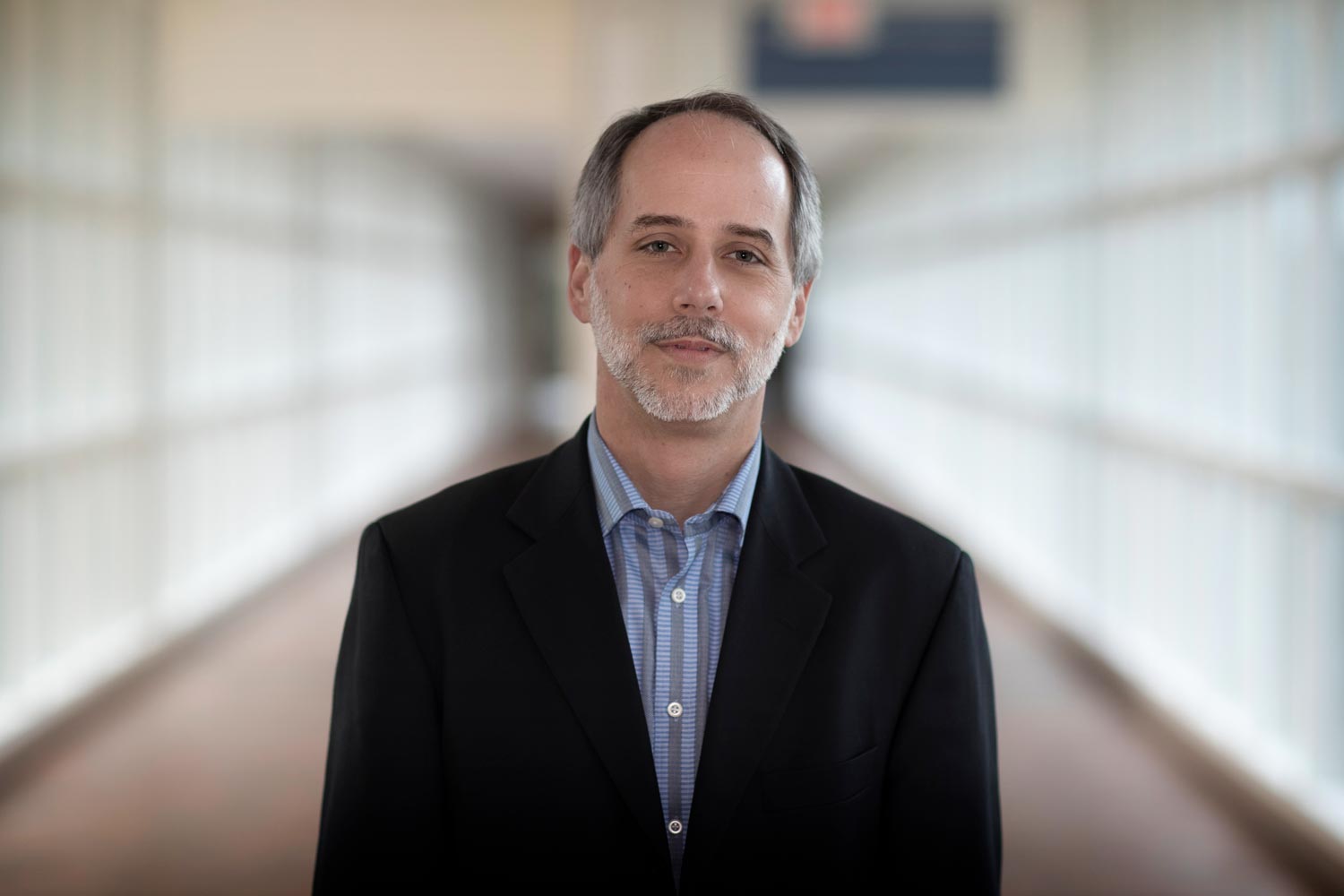Engineers tend to think like engineers. Doctors, like doctors. Nurses, like nurses. That is how these professionals have been trained to think.
But what happens when engineers are partnered with medical professionals to tackle pressing health care challenges – with each collaborator bringing forth distinct professional insights?
Society gets better medicines, treatments and technologies.
The University of Virginia is making that happen through the creation of a new Center for Engineering in Medicine. The goal is to build partnerships at the interface of engineering and medicine to improve the prevention, diagnosis, monitoring and treatment of disease.
“Many of the most innovative and high-impact approaches to complex medical problems are occurring at the junction of engineering and medicine,” said Dr. Jeffrey Holmes, the center’s founding director, and himself both a biomedical engineer and medical doctor. “We can enhance insights for new therapies, better medicines and innovative medical devices by bringing creative minds together from across the professions.”

Jeffrey Holmes heads UVA’s new Center for Engineering in Medicine.
UVA has a natural land bridge, so to speak, in that the School of Engineering and Applied Science is within a reasonable walk of both the schools of Medicine and Nursing. Researchers and clinicians in all three schools are capitalizing on that proximity with encouragement and seed grant funding from the Center for Engineering in Medicine.
“The access is a real advantage, and as a result we have a long-established culture of interdisciplinary collaboration,” Holmes said. “UVA is one of only eight universities in the nation with top engineering and medical professional schools located less than a mile apart.”
UVA launched the center with a $5 million Strategic Investment Fund grant, matched with another $5 million from the Engineering and Medical schools. This effort will dramatically expand the scope of engineering-medicine efforts at the University; the initial proposal already involved more than 120 faculty members from 20 departments.
The center features a program to embed engineering students and postdoctoral researchers into clinical environments, allowing them to work side-by-side with physicians and nurses. Likewise, medical and nursing students and fellows are entering engineering labs to gain understanding of engineering technology and design.
Another key pillar in building sustainable new engineering-medicine partnerships is providing seed funding to help teams develop initial prototypes and preliminary data needed to secure external funding for their projects. The Center for Engineering in Medicine has thus far seeded 15 projects with an average of $75,000 each. Here are four examples of new center-supported partnerships.
Better Managing Cancer Pain
Nursing professor Virginia LeBaron, a cancer care researcher, is teamed with John Lach, an electrical engineering professor, and Dr. Leslie Blackhall, a palliative care physician, to help patients and family caregivers better and more safely manage cancer pain at home.
The team is developing and deploying an innovative, in-home system of wireless sensing technology developed at UVA that records factors that may contribute to increased pain. The goal is to better understand and ultimately predict the circumstances – such as stress, sleeplessness and various activities – that can worsen pain at different times of the day and night.
A better understanding of these patterns can promote more personalized pain management strategies and safer use of pain medications. In turn, this may reduce stress for both caregiver and patient. Reduced stress can also reduce pain, the researchers say, as pain and stress are often intertwined.
Improving Respiratory Health
About 5 percent of asthma patients suffer from frequent and severe sudden chest tightness, which can sometimes lead to respiratory arrest, requiring an emergency room visit and, often, hospitalization. UVA engineering professors Daniel Quinn and John Lach and asthma physician Dr. Larry Borish are developing and testing new sensors to help detect sudden asthma attacks before they happen, allowing for quick preventive medicative treatment by the sufferer.
Most current early detection mechanisms require monitoring in a controlled setting under supervision of medical professionals using bulky instruments. The UVA team is exploring the feasibility of a small implanted sensor to internally monitor airflow in asthmatics. The new technology is innovative in that it would work continuously in the everyday environment while harvesting energy from the patient’s breathing, thereby eliminating the need for batteries.
Mobile Technology to Monitor and Treat Depression, Anxiety in Caregivers
Cancer affects not only patients, but also those who care for them – spouses, partners, relatives and friends. Studies show that these caregivers can have higher levels of depression and anxiety than the patients they care for, yet their distress is less widely recognized and seldom addressed.

But four UVA researchers – psychiatry professor Phillip Chow, systems engineering professor Matt Gerber, surgeon Dr. Shayna Showalter, and Wendy Cohn, a professor of bioinformatics – are out to change that. They are building on recent evidence that brief interventions delivered by smartphone can improve depression and anxiety among patients and their caregivers.In partnership with the UVA Cancer Center, the team has developed smartphone-based methods for distress monitoring and intervention, with the aim of tailoring these methods to cancer patients and caregivers.
Targeting Pain with Innovative Drug-Delivery Patches
Three UVA researchers are developing drug delivery patches that will be worn on the skin, like a bandage, to deliver non-addictive pain medicine directly to the site of pain, such as the lower back, rather than systemically via pills or injections.
The work builds on UVA’s expertise in orthopedics and pain management – and the engineering of very thin and flexible sensors and circuits. The device brings together several technologies that will allow controlled flow of medication to provide direct and effective pain relief.
The goal is to help patients effectively participate in managing their own pain without fear of becoming dependent on medications. The work is led by orthopedic surgeon Dr. Joshua Li, mechanical engineer Baoxing Xu and orthopedic surgery researcher Jin Li.
“As we were putting together the initial proposal [for the center],” Holmes said, “we kept finding more and more faculty who were interested in the idea, but I still think we underestimated the demand: we received 57 seed grant applications in our first year. We can’t wait to see what happens in year two.”
Media Contact
Article Information
May 1, 2018
/content/new-center-inspires-and-funds-collaborations-engineering-and-medicine

